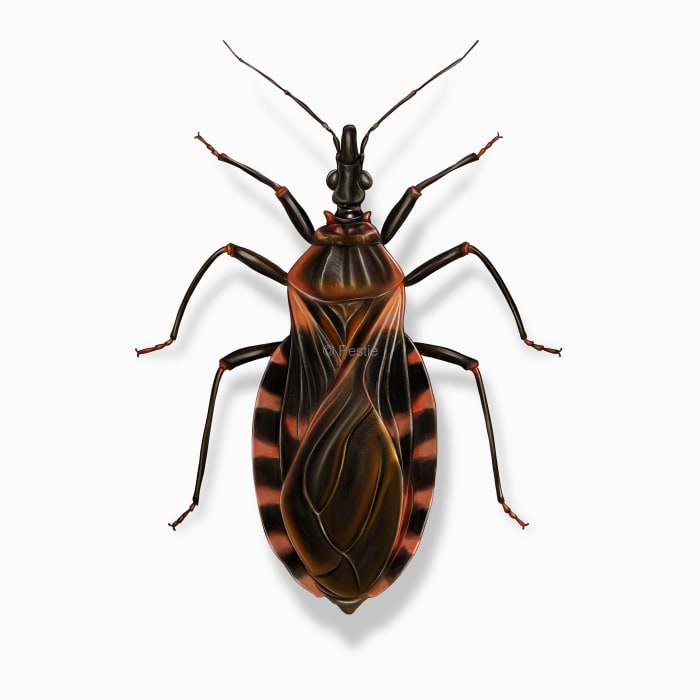How to identify and get rid of kissing bugs

Don’t pucker up for these biting bugs
If there was a list of the least kissable things, porcupines, Dracula, and kissing bugs might top that list.
Kissing bugs are known as triatomine bugs, but they earned their nickname from their tendency to bite humans around the mouth and eyes. While a single bite might just seem like an itchy annoyance, these bugs can carry and transmit the parasite that causes Chagas disease, making them a significant health concern.
These true bugs only feed at night, and will crawl on mammals, including humans, for a blood meal. They don’t transmit the parasite in their saliva, but in their feces. A person contracts the parasite when they scratch the feces into the itchy bite.
Kissing bugs are great hiders during the day, making them hard to spot. They start off as small wingless nymphs and every stage of the kissing bug requires them to feed on blood. This can come from dogs, wild animals, or humans.
Once they have developed into adults, they will have wings. They tend to lay their eggs in cracks and crevices they hide away in.
How to identify kissing bugs
Kissing bugs can be identified by their dark, somewhat flattened bodies and the cone-shaped head that houses their blood-sucking beak. They often have telltale red or orange markings around the edges of their abdomen, making them distinct from other household pests. If you notice unexplained bites, especially around the face or while sleeping, or find bugs that match this description in your home, it's important to take action. These signs can indicate the presence of kissing bugs.
How big are kissing bugs?
Kissing bugs typically grow to about 0.5 to 1 inch in length.
Where do kissing bugs live?
In the United States, kissing bugs are primarily found in the southern and western states, thriving in both rural and suburban areas where they can feed on domestic animals and wildlife. Indoors, they are found around pet resting areas or bedrooms. They hide in cracks and crevices inside the home and only come out at night to feed.
How to get rid of kissing bugs
Prevention is the best key to keeping kissing bugs away. Here are some tips to make sure kissing bugs don’t end up in your bed:
Seal entry points: Caulk cracks in windows, doors, and walls to prevent entry.
Remove animal nests: Eliminate nesting materials and potential habitats near your home.
Proper pet care: Regularly clean pet bedding and areas where pets sleep.
Use screens: Install fine mesh screens on windows and vents to keep bugs out.
Bug barrier: Start and maintain a bug barrier around your home with Pestie. Pestie’s pro-grade solution is a pet friendly way to keep kissing bugs away from your home and family year-round.
Treat kissing bugs with Pestie
If you're still having trouble keeping kissing bugs away, the best option is to use a pro-grade, effective pest control solution like Pestie.
Pestie is a do-it-yourself pest control solution that's specially designed to keep kissing bugs and other pests away from your home.
With Pestie, you can rest easy knowing that your living space is protected and free of creepy crawlies. And the best part? It's designed for people, pets, and the planet, so you can say goodbye to harsh chemicals and hello to peace of mind!
- Save hundreds compared to traditional annual pest plans
- People, pet, and planet-friendly
- Pro-grade customized formulas
Quick facts
How dangerous are Kissing Bugs?
High danger risk
Kissing bugs are medically important because they can transmit Chagas disease. If you find bites on your face, wash your face with soap and water and use itch cream to relieve the itching. You may want to check with a healthcare professional if you experience fever, body aches, or sudden fatigue.
- Scientific name
Subfamily - Triatominae
- Other common names
Conenose Bugs, Vampire Bugs
- Colors
Black, red, orange
- Life span
1 year
- Diet
Blood
Kissing bugs are attracted to body heat, carbon dioxide, and certain body odors from the skin.








